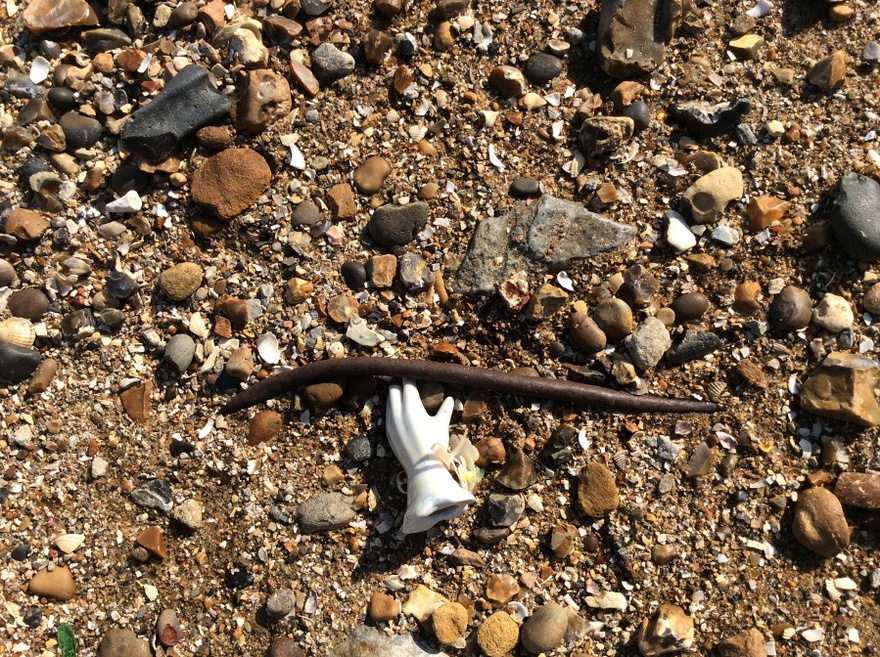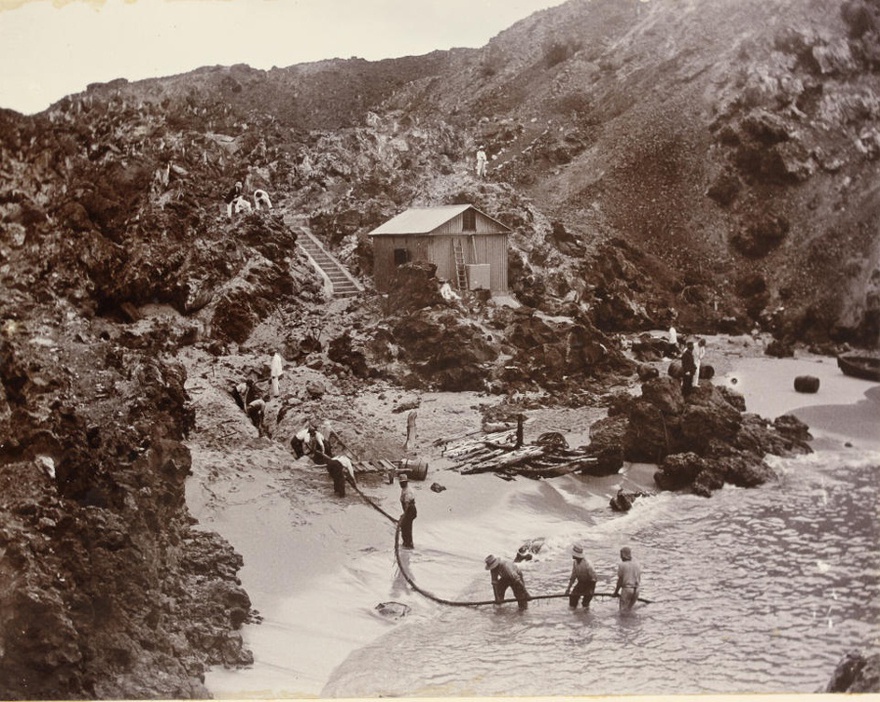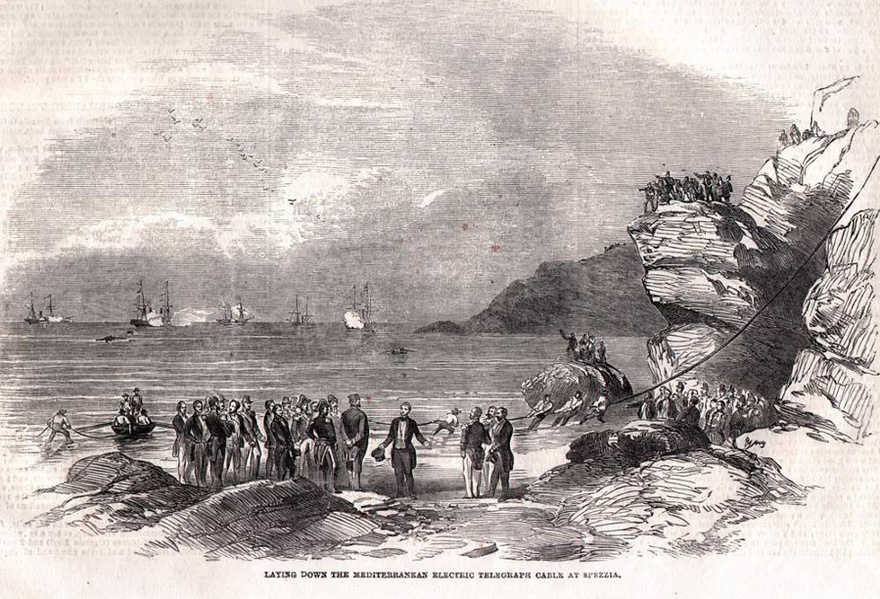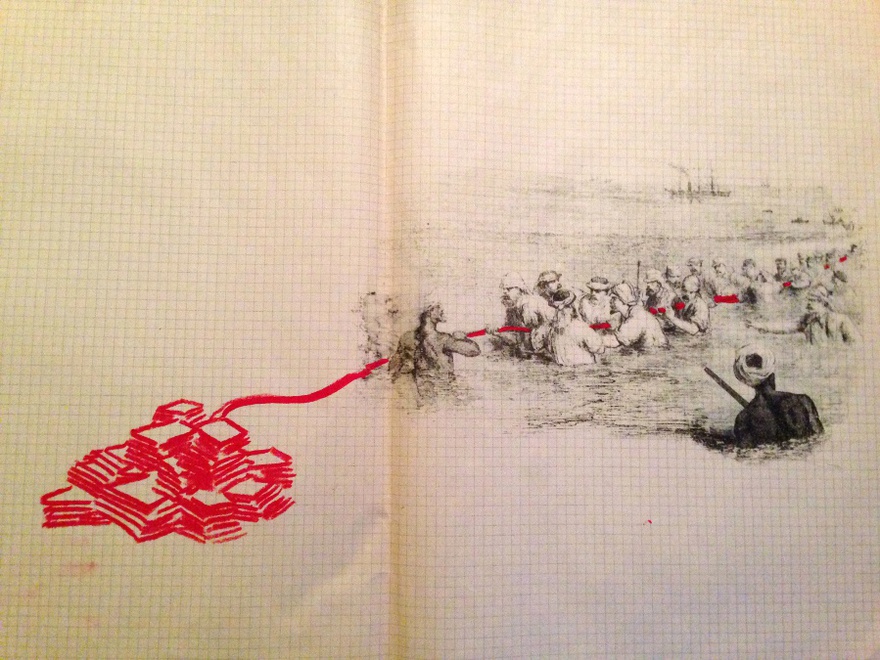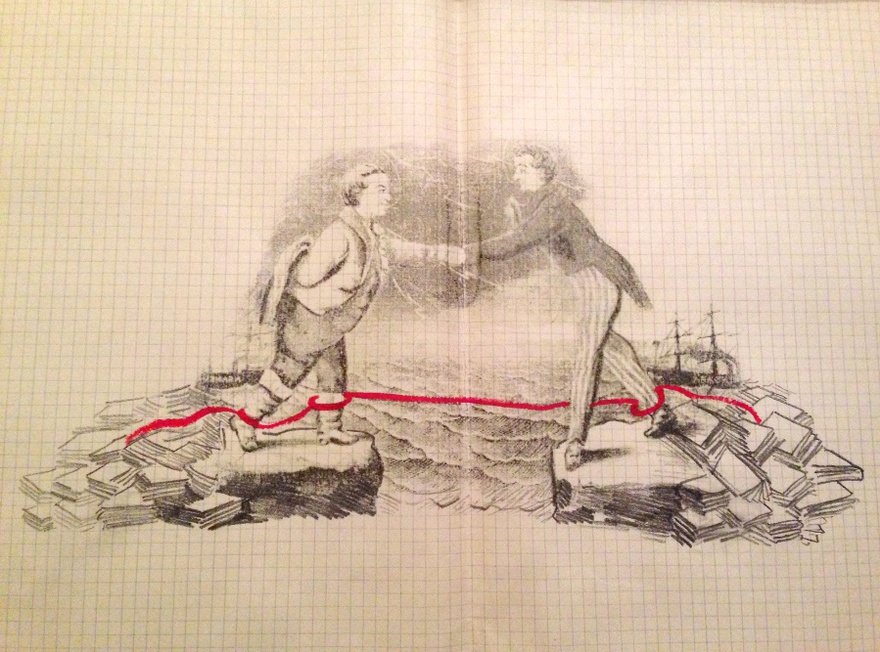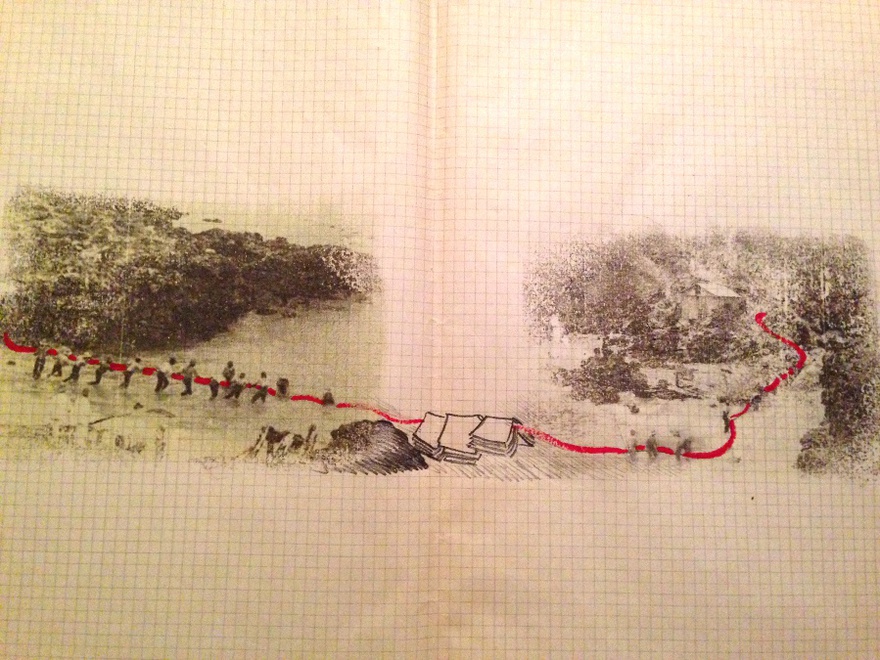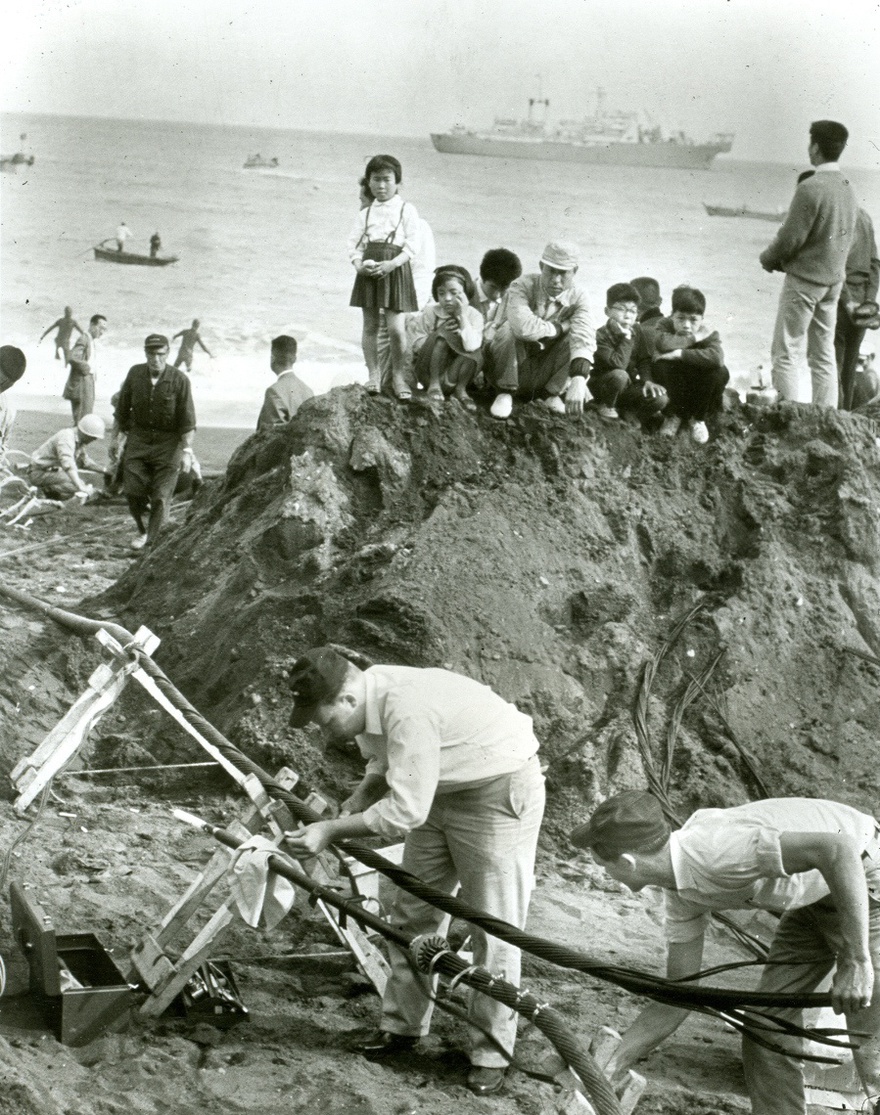Projects
Submarine Writing
Introduction by ILiana Fokianaki | State of Concept, Athens
What struck me about Hera Büyüktaşçıyan's work when I encountered it for the first time was the prominent way she used history as a tool to create a narration that was completely connected to her own personal memory as a Greek of Armenian descent living in Istanbul. For many artists, that is not material that they choose to work with, but for Büyüktaşçıyan, it is the very space from which she draw inspiration. I soon came to realize that the term 'site-specific' took a new meaning in her case.
Take Büyüktaşçıyan's Platform 008 project. The starting point was her residency at the Delfina Foundation in summer 2014, when she traveled to the United Kingdom's East Coast and discovered rusty thick cables that were visible through the sand during the low tide on a beach in Dover. The cables were submarine telegraph cables that were used to convey intelligence during periods of war, from the early-nineteenth century through to the Second World War. The cables represent the history of a system: in the 1840s, when submarine cables connected England, France and other parts of Europe, the Atlantic Telegraph Company was established. Soon, new telegraph companies began to spread out towards the Middle East and North Africa, too. One of the first of these was a cable that connected Constantinople to Baghdad, laid in 1861, which then moved towards Alexandria.
In her research, the artist has uncovered imagery showing the use of these cables during several historical periods; period connected by the fact that the sea itself has been the environment through which all communication means have been transferred from one topos (place) to another. The sea has always been the conveyor of messages, objects, cultural artifacts and most importantly language: an instrument not only of division of mainlands, cultures and languages, but of connectivity, as with these underwater cables. In Büyüktaşçıyan's, work, she considers how the sea secretly connects the past with the present through a kind of immaterial transference. It is fitting, then, that the word telegraph, or 'telegraphos' in Greek, means writing from a distance, or writing to a distant place. In this, through her drawings, Büyüktaşçıyan is literally following the mapped and unmapped history of these cables and rewriting a new narration – a topos that links the internal and the external, the personal and the social, the physical and the emotional, the literal and the imaginary.
Read Büyüktaşçıyan's interview with Basak Senova for Platform 008, here.

